Following is from a PCB that I am presently working on. That particular path signals are of 100-400kHz signals. Is there any problem in having routes of this kind?

Following is from a PCB that I am presently working on. That particular path signals are of 100-400kHz signals. Is there any problem in having routes of this kind?

Old timers might grumble about "etchant traps" ... acute angles can hold acid (well, FeCl) long enough to eat through the track - or not, depending on who makes the PCB for you. Consult with them if you are worried.
But I was downvoted for pointing that out in a previous answer, so at least somebody thinks that's no longer a problem.
As far as the signal speed on that trace - nothing to worry about.
Regarding the signal it doesn't matter. The sharp angle might cause an acid trap, but with the trace width you are using should not be a problem. I would have routed horizontaly from the SMD pad to the vertical trace making a right angle.